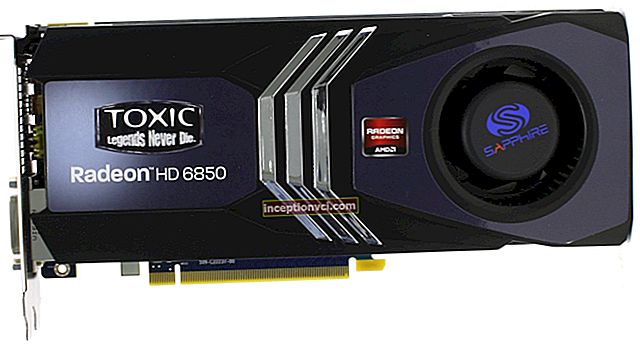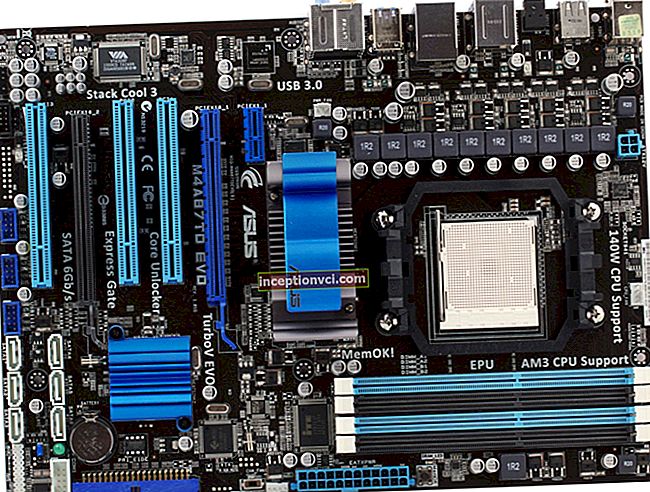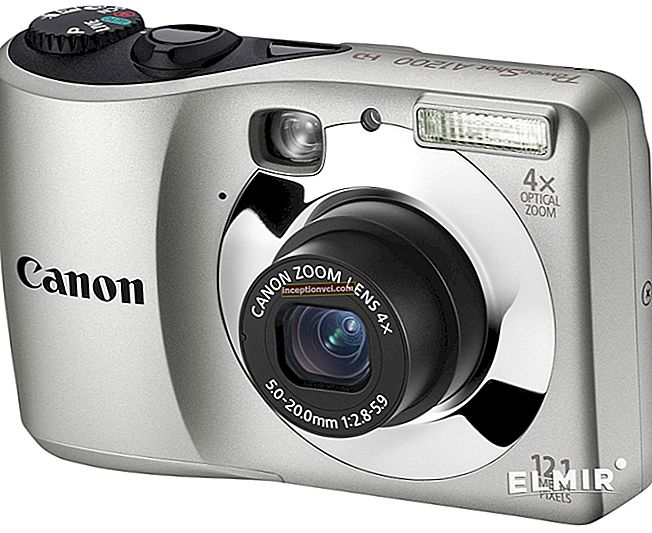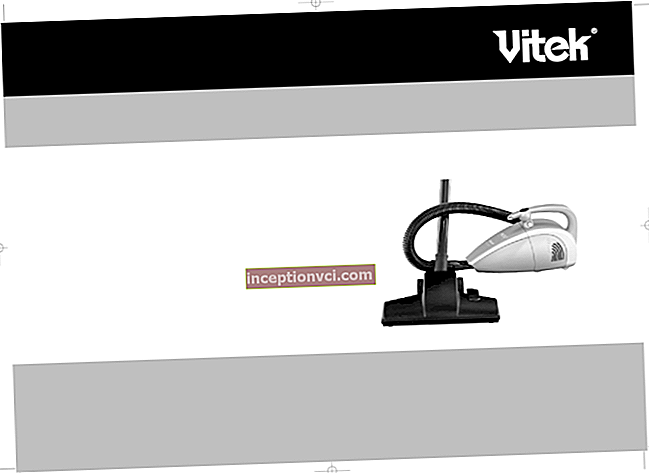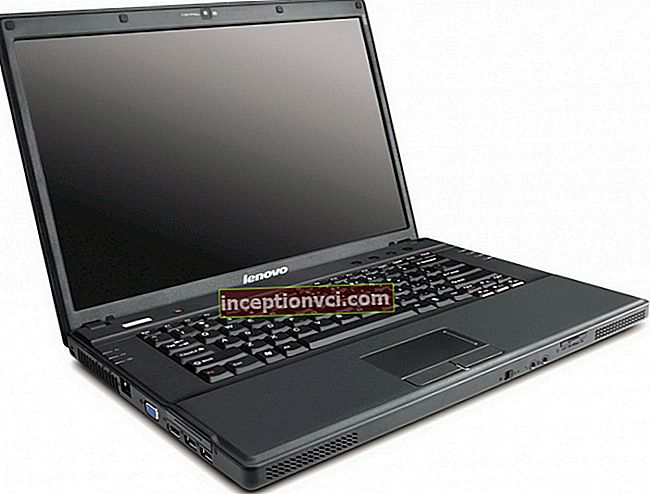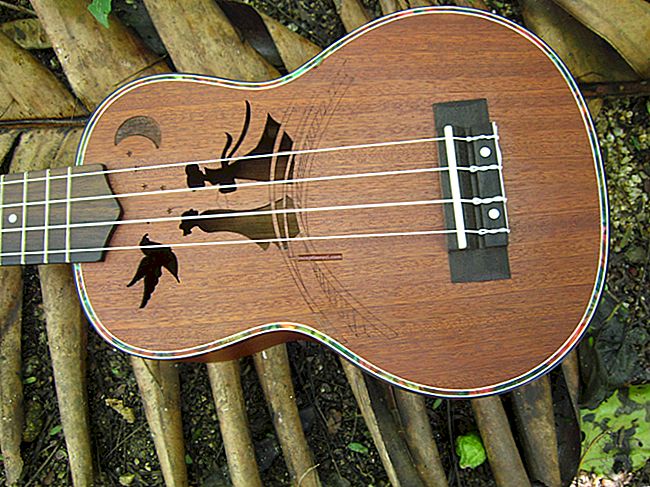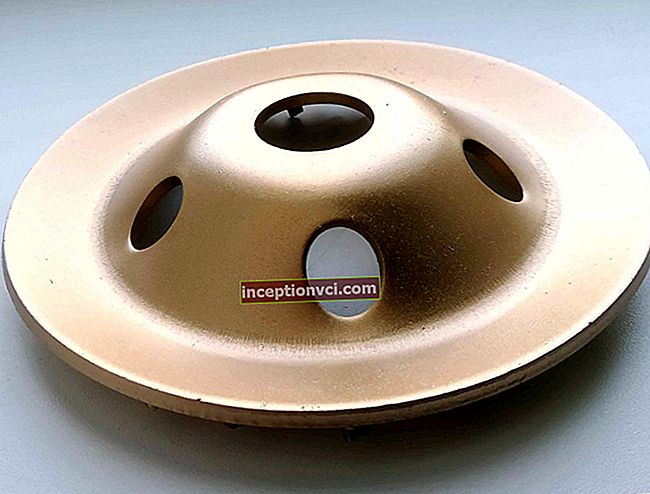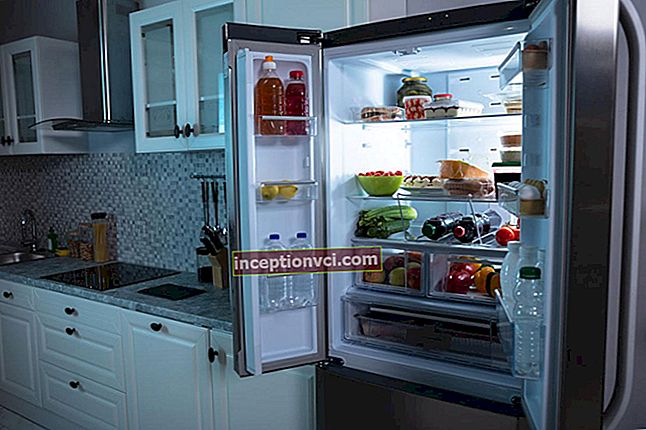Test review of the smartphone Lenovo P780.
Several years ago, when Lenovo was just beginning to officially present its mobile devices in the domestic market, at the presentations of its new products, it showed a promotional video, which clearly showed the distribution of all smartphones by certain categories. Each of these categories has its own lettering. For example, the line marked with the K index includes the most advanced and most expensive devices of the company. It is in this category that all the company's flagship models belong, which at the time of their release are at the cutting edge of technology. This classification is valid today: the most powerful and top-end smartphones Lenovo K900 and Lenovo K910 (Vibe Z) belong to this category. However, in the company's classifier there is a very curious category of devices, indicated by the index P. This letter denotes smartphones, which, in terms of their popularity, can not only compete with their flagship brothers, but also give them a head start.


This category includes mobile devices that primarily target a business audience. In this case, it does not mean that not every user can afford such models, but that they are designed to ensure the daily performance of important tasks and the uninterrupted conduct of flowing affairs. For this, smartphones are equipped with the most capacious rechargeable batteries, which is their most important difference. In addition, all models of the line support the operation of two SIM-cards, and this solution is one of the most popular and demanded characteristics of mobile assistants among modern business people. Such a set of characteristics was presented in every P-series device: first, Lenovo introduced the P700i model, a little later it was replaced by an even more interesting model P770 in all respects, however, it was quickly replaced by the hero of the review - the Lenovo P780 smartphone. It differs slightly from the 770th model, but in everything - a larger screen, a more capacious battery, more processor cores, a new operating system, etc.
Contents of delivery
The smartphone is packed in a fairly spacious box made of solid cardboard, which is covered with light matte paper on top. In appearance, the packaging is quite simple, but it is made very practical and neat: inside it even has pictograms that help to properly pack the set of components. From above, the box is additionally covered with a cardboard casing with a printed image of the smartphone itself and a list of technical specifications.


The box contains a not too compact in size, but a rather powerful charger (current 2 A), a thick microUSB connecting cable, good headphones with vacuum-type gel tips and a tangle-free flat wire, as well as an OTG adapter designed to connect to an external smartphone. peripherals or flash drives. On the whole, the P780 is equipped very well: both the contents and the packaging itself make the most pleasant impression at first glance and set you up for a respectful and serious perception of the main product hiding in the box.
Design and usability
The appearance of the smartphone turned out to be quite nice: although its appearance is discreet and does not look too expensive, the device exudes thoughtful brevity, clear drawing of all lines and contours, unshakable solidity and some aggressiveness. Without a doubt, the P780 is a truly masculine smartphone. In all its details, you can feel the style of minimalism and the absence of unnecessary tinsel.


The dimensions and weight of the P780 are quite large, so it is not suitable for every hand, let alone a woman's.However, the considerable weight of the phone has a good excuse - it comes with a huge battery and has a strong metal back cover, and these properties cannot be counted among the minuses.
The back cover almost completely occupies the back surface of the device. It is made of a fairly thick metal sheet, which is a rarity for modern communicators, but not for Lenovo products, which does not save on metal elements for its devices. Proof of this is, for example, the famous K900 model, the body of which is almost entirely made of metal. Of course, the abundance of metal parts significantly increases the weight of the device, but, on the other hand, it also gives strength - if you take the P780 in your hand, you immediately feel this monolithic reliability. Although the metal cover is a removable part, it, like all other elements, is so tightly fitted to the body that it seems like a monolithic construction. However, it can be removed very easily - fastening is carried out thanks to several small latches, and a small ledge for the nail is provided for dismantling the cover.


Under the cover, you can see a very familiar picture for devices built on the MediaTek platform. Three slots for cards are located in a row above the battery: two slots for SIM-cards and one for a memory card in microSD format. SIM card slots are designed for the installation of old-style telephone cards - miniSIM format. The slots have a slot structure, cards are held in them by frictional force, additional latches are not provided. Under the memory card, you can find a small red button designed to restart the smartphone in case of unexpected failures. The rest of the space under the cover is taken up by a huge battery. It is closed with a special casing screwed to the body of the smartphone and is a non-removable element. There is even a sticker on the casing, which states that if the battery is dismantled on its own, the user will lose the factory warranty.


With the back cover installed, the back surface of the device has a standard look - in the upper part there is a window of the main camera, framed for protection by a protruding metal rim, and next to it there is a single-section LED flash eye, which can turn into a flashlight thanks to a program specially installed in the smartphone. At the bottom of the cover there is a cut-out grille for the main speaker. One of the grill rods has a slight outward bend, due to which the speaker area rises above the surface if the device is located on the back surface, and the sound goes out unhindered. The picture is completed by a huge company logo, which is embossed directly into the metal, so it is not subject to abrasion.
The front surface of the smartphone is completely covered with a protective glass that is resistant to scratches. Under the glass are the eyes of the touch sensors, the front camera lens, the earpiece grille and three touch buttons for controlling the system and applications. The buttons have an adjustable operating mode (On, Off, Automatic) and a bright white backlight. Traditionally, a very useful element is located in the area of the speaker grill - an LED indicator that shines in various colors through the grill bars to indicate incoming messages and charging status. The sensor does not shine too brightly and is not annoying at all. However, when turned on, it is very persistent - if there is at least one unread message in the smartphone, the sensor will stubbornly glow green until the message is read or until the battery is discharged.


The entire side perimeter of the case is framed by a chrome-plated metal bezel, which is a thin shiny strip, which is recessed into the case so that it practically merges with the surface. The rest of the surfaces of the smartphone are matte and rough, thanks to which it is securely held in the hand. In addition, virtually no fingerprints remain on it. A very practical case is a definite plus of the P780.


However, the body of the smartphone also has one significant drawback - the power / lock button is not very well located. It is traditionally cut into the upper edge, but taking into account the huge dimensions of the device, reaching for it several dozen times a day is rather tiring. Some manufacturers implement alternative wake-up options in their smartphones - pressing other hardware buttons, tapping the screen, etc. But the P780 does not have anything like that, so the user will have to get used to constant manipulations with the device in order to reach the power / lock button. Next to this button are a universal microUSB connector and a standard 3.5mm audio output. The microUSB connector is covered with a hard rubber flap, and the audio output has no protection. In addition to these elements, there is one more button on the body - a paired volume control swing, which is located on the right side. It is made of metal, large enough and well pressed. However, unfortunately, it is located too high, so it is difficult for a finger to reach it.


To everything else, it should be added that the user has three options for body colors - black (Lenovo Ideaphone P780 Black), gray (Lenovo Ideaphone P780 Gray) and white (Lenovo Ideaphone P780 White).
Display
The P780 is equipped with a 62x110 mm IPS sensor with a diagonal of 127 mm (5 inches) and a resolution of 1280x720, which gives a ppi number that is not very high for modern top-end smartphones - 293.
The brightness of the display can be adjusted in both manual and automatic modes. Automatic brightness control is supported by the light sensor located to the right of the front camera lens. Multi-touch technology allows you to handle up to ten simultaneous touches. Also, the smartphone has a proximity sensor that blocks the display when the device is brought to the ear.
The front surface of the screen is a glass plate with a smooth mirrored surface that is resistant to scratches or chips. Judging by the intensity of reflection of objects on the screen, it has a fairly effective antiglare filter. The doubling of reflected objects is very weak, which indicates that there are no air gaps between the layers of the display. The outer surface has a good oleophobic (grease-repellent) coating, so fingerprints can be removed more easily than with regular glass.
With manual brightness control, its maximum value is about 380 cd / m2, and the minimum is about 15 cd / m2. The level of maximum brightness, although not a record, is quite high, therefore, taking into account the effective anti-reflective filter, the information content of the screen should be at a high level even on a bright sunny day. In complete darkness, the brightness level can be reduced to a comfortable level. As the environment changes, the screen brightness can either increase or decrease. Moreover, the decrease in the brightness level is much slower than the increase. In automatic mode, in the complete absence of lighting, the brightness will drop to 8 cd / m2, under conditions of a room illuminated by fluorescent lamps, the brightness will be set at 125 cd / m2, and outdoors on a bright sunny day - at a maximum value of 380 cd / m2 .m. In general, the operation of the automatic mode for changing the brightness level should be recognized as very effective. At any brightness level, there is practically no backlight modulation, which completely eliminates screen flicker.
The screen has good viewing angles without significant color shift, even with significant deviations from the perpendicular to the screen and without inverting the shades.
The final impressions of the P780 display are as follows. The screen is characterized by a fairly high maximum brightness, a fairly effective anti-glare filter, a good oleophobic coating, no flickering and no air gaps in the layers, high contrast and good black stability when viewing deviations from the perpendicular to the screen. The main disadvantage can be called the low uniformity of color and brightness parameters across the display area, but with standard use of a smartphone, this drawback is unlikely to be noticeable.
Sound
The sound capabilities of the P780 are average. The ringing loudspeaker is characterized by a very loud, but unpleasant and piercing sound with a predominance of ringing high frequencies, and no bass is observed at all. But if you put on the complete headphones, then the situation changes in the opposite direction - the maximum sound volume is rather low, and the level of low frequencies is so high that it is sometimes difficult to make out the words of the sounding song. Correction of such a situation with the help of a standard equalizer does not bring tangible results. Thus, the P780 is not a musical solution at all. In addition, in terms of software, the manufacturing company limited itself only to the installation of the standard Play Music program.
The smartphone is equipped as standard with a voice recorder for creating voice memos and an FM receiver that works only when headphones are connected. The undoubted advantage of the P780 is the ability to record conversations directly from the line, however, access to the recording can only be obtained using the file manager, and in some other smartphones the record is displayed opposite the completed call, which is much more convenient.
Cameras
The P780 is traditionally equipped with two digital camera modules.
The front camera has a resolution of 0.3 megapixels (VGA), which allows you to take pictures with a size of 1280x720. It has neither autofocus nor flash.
The main rear camera is equipped with an 8-megapixel module with LED flash. Focusing can be performed both in manual and automatic modes. The maximum resolution of the rear camera is 3264x2448. The camera fully justifies its 8 megapixels. When you delete the plan, the sharpness drops naturally and smoothly. The software processing works moderately and quite reasonably, without spoiling small details in the background. At high values of light sensitivity and insufficient lighting, unpleasant color noise appears, which is almost not processed. But in good light the camera takes excellent pictures, and in this case, minimal software processing becomes an advantage, since it does not spoil the natural sharpness of the frame.
In general, the P780's camera is not outstanding, but in good lighting conditions it is quite suitable for documentary photography.
The camera can shoot video clips. There are several shooting modes to choose from up to Full HD. Video files are saved to a 3GP container.
The camera is controlled using the company's proprietary program, which has the name Supercamera. The interface of this program cannot be called very convenient: there are many icons on the screen around the entire perimeter, they are small, and besides, the menu has only one position - horizontal. The smartphone does not have a dedicated hardware button for releasing the camera shutter, however, for these purposes, you can use the volume rocker.
Telephone part and communications
The smartphone supports modern 2G GSM and 3G WCDMA networks, but it does not support fourth generation networks (LTE). The 5 GHz Wi-Fi range is not supported, and there is no support for NFC technology either. It is possible to organize a wireless point using Wi-Fi or Bluetooth channels.The navigation module of the smartphone supports the GPS / A-GPS standard, and the device does not work with the well-known Russian navigation system Glonass. The P780 also has Wi-Fi Direct and Wi-Fi Display modes (for connecting to a wireless projector). No freezes, no spontaneous reboots or shutdowns were noticed during the entire testing period.
The screen of the smartphone is large, so working with the virtual keyboard is quite comfortable. The location of the keys and the layout are standard: the switching of languages is carried out using the icon with the image of a globe, there is no highlighted top row with numbers, so in operation you have to switch from letters to numbers and back all the time in manual mode.
The operation of two SIM cards is organized according to the traditional Dual SIM Dual Standby standard, in which both cards are in active standby mode, but they will not be able to work at the same time, since the smartphone has only one radio module. There is no possibility to switch slots operating modes between 2G and 3G standards. In this case, the SIM card installed in one slot works only in 2G mode, and in the other slot only in 3G mode. A special section of settings allows you to configure the conditions for the operation of SIM cards. Any card can be assigned as the main card for organizing phone calls, sending SMS messages or transferring data. In any case, when dialing a number, the user always has the option of choosing the SIM card from which he wants to make a call.
Operating system and software
The operating system is the software platform Google Android 4.2.1, which has a proprietary Lenovo user interface. Its graphic component is very nice - the substrate is predominantly white, there is no riot and variety of colors. In general, everything is modest and serious, as it should be for a business-class device. The interface looks more like the interface of the K900 model than the K910 model - the latter turned out to be somewhat lurid.
Performance
The P780 hardware platform is based on the MediaTek MT6589 single-chip system. The quad-core CPU has Cortex-A7 cores that run at 1200 MHz. This configuration is basic for the Taiwanese manufacturer's quad-core platforms, and, moreover, not the most recent. The well-known PowerVR SGX 544MP video accelerator assists the processor in graphics processing. The smartphone has 1 GB of RAM, which is still not enough for a business device today. About 2.8 GB of free flash-array are available to the user to accommodate their own files, and about 4.3 GB is allocated for the needs of the operating system. Some users mistakenly take 4.3 GB as the available storage for their own data, as the specification lists it first. However, this value corresponds to the size of the system memory, and it is worth repeating to users for their own needs 2.8 GB, which is frankly not enough. However, the device supports the possibility of increasing the memory due to microSD memory cards. In addition, thanks to the ability to connect external devices to the USB port (USB Host and USB OTG modes), you can directly read files from flash drives.
To determine the performance of the smartphone, a number of tests were carried out using popular test programs - AnTuTu 4, GeekBench 3, MobileXPRT. For comparison, several devices running on the MediaTek platform were selected as competitors - Alcatel OT Idol X, Iconbit Mercury Quad, Fly Luminor IQ453, and a device running on the Qualcomm Snapdragon 800 platform - LG Nexus 5. The graphics subsystem was tested using a cross-platform test 3DMark and Epic Citadel gaming benchmark. In general, the P780 showed quite expected results for a device running on the MediaTek platform - in almost all respects it loses to a device running on the Qualcomm platform, and in comparison with its classmates, it demonstrated average results.
Battery life
The lithium-ion rechargeable battery that is installed in the P780 would be more suitable for any tablet, since its capacity is unprecedented for smartphones 4000 mAh. Naturally, in all testing modes, the device shows miracles of longevity and rightfully ranks first in terms of battery life among all smartphones on the market today.
Continuous reading of text files in the FBReader program at the minimum acceptable level of brightness (about 100 cd / m2) completely discharged the battery after 33 hours, and watching videos in high quality (HQ) from the YouTube Internet service via a home Wi-Fi network via 20 hours. In 3D games mode, the device also demonstrated unprecedented performance for smartphones - more than 10 hours of operation until the battery is completely discharged. In conclusion, it is worth repeating once again that today the P780 holds the absolute record for battery life.
Final impressions
In general, after all the stages of testing, the P780 not only met all expectations, but even surpassed them. The device turned out to be very decent, tightly cut and nice, but at the same time its cost is not too high. In terms of battery life, the smartphone shows record results for smartphones of any level, which fully confirms its main focus on the business segment. First of all, P780 is valuable for its ability to become an indispensable mobile assistant for organizing a huge number of everyday tasks, and not for its multimedia component. The device is characterized by average performance, modest quality of photo and video shooting, it is also not suitable for gaming entertainment. But the owner of the P780 will not have to worry at all that his mobile assistant will not be able to reach the next scheduled charge, even with a very intensive mode of operation throughout the day. For such users, the P780 will be just a unique find, which is quite naturally confirmed by the high level of interest in it.

